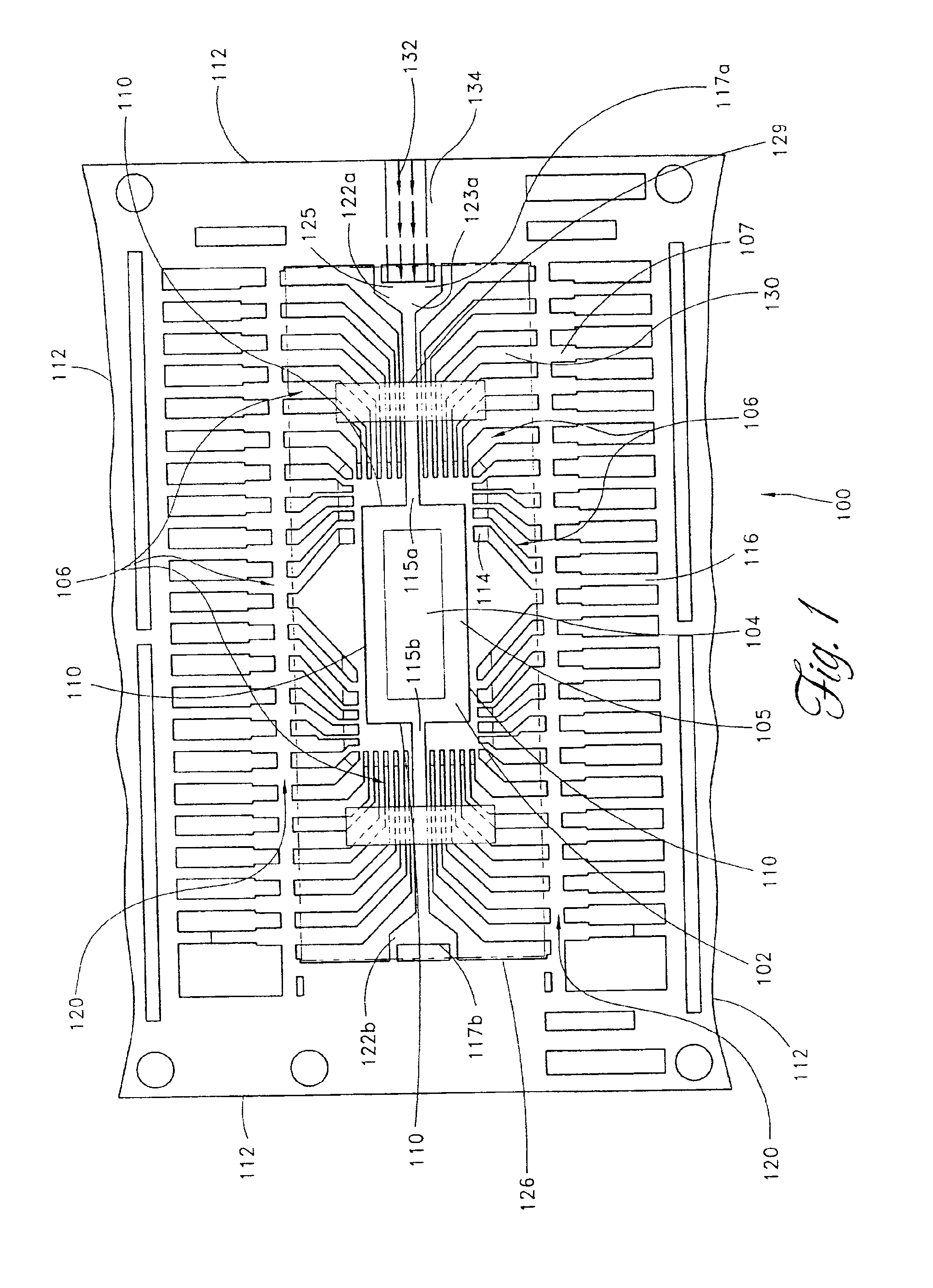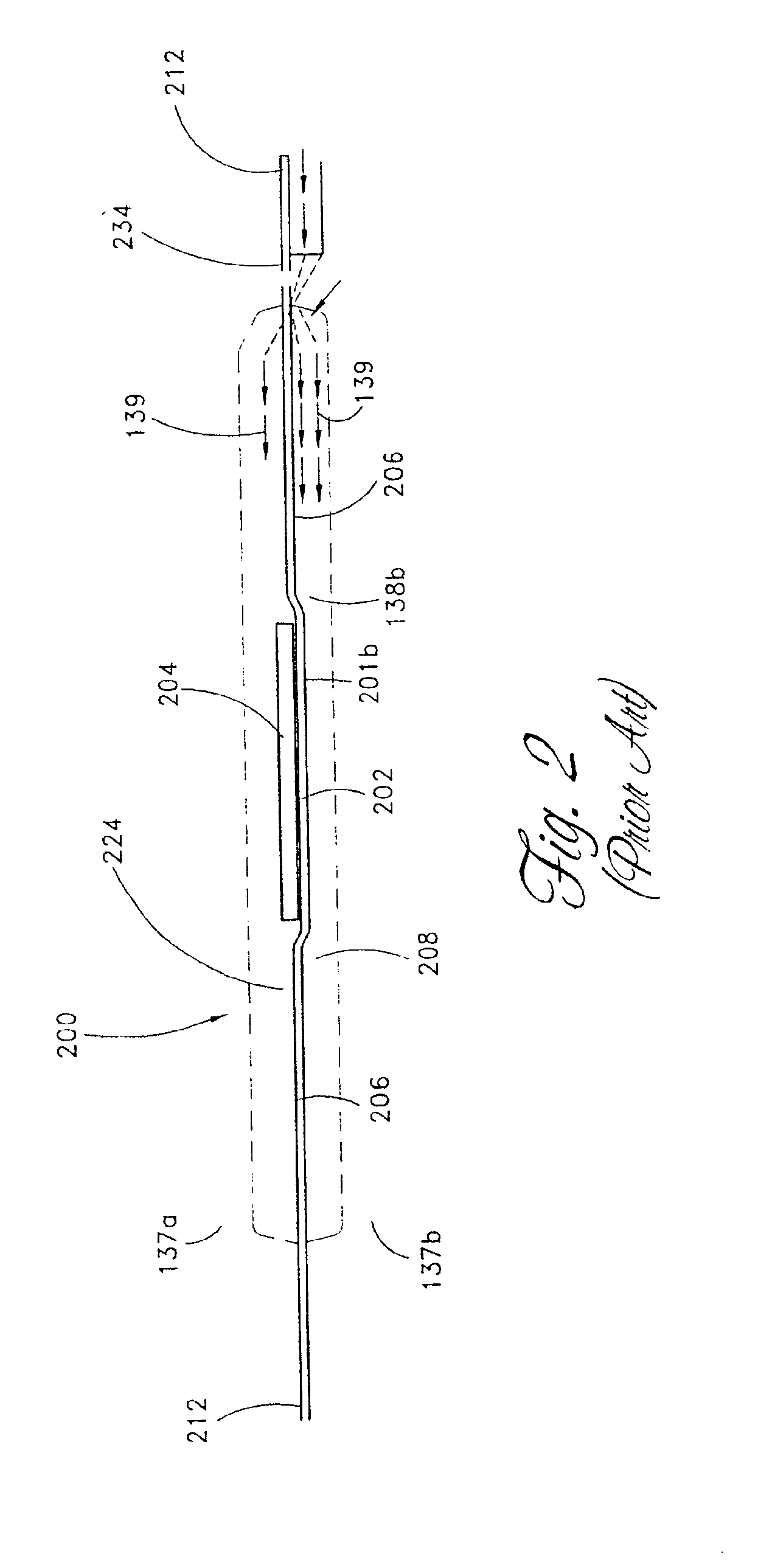Leadframe alteration to direct compound flow into package
a technology of leadframe and package, which is applied in the field of leadframe, can solve the problems of less effective protective structure, unable to ensure the safety of the mold, and the molding compound entering the bottom gated mold tends to conglomerate, so as to increase the pressure differential, increase the flow of compound, and increase the effect of compound flow
- Summary
- Abstract
- Description
- Claims
- Application Information
AI Technical Summary
Benefits of technology
Problems solved by technology
Method used
Image
Examples
Embodiment Construction
[0021]Reference will now be made to the drawings wherein like numerals refer to like parts throughout. As will be described hereinbelow, the leadframe of the preferred embodiment provides a leadframe that effectively directs the molding compound to flow evenly around the die and leadframe during encapsulation so as to reduce voids and pinholes in the encapsulated lead frame that typically result from uneven resin flow inside the mold cavity.
[0022]FIG. 1 illustrates a general top down view of a leadframe 100 of the preferred embodiment. As is shown in FIG. 1, the leadframe 100 is generally rectangular in shape and is typically made from a thin sheet of metal such as a copper or nickel alloy. As will be described in greater detail below, the leadframe 100 is designed to provide structural support for a die or chip and also facilitate electrical interconnection to the components formed on the die. In the typical packaging process, the die is encapsulated in a plastic enclosure. Further...
PUM
 Login to View More
Login to View More Abstract
Description
Claims
Application Information
 Login to View More
Login to View More - R&D
- Intellectual Property
- Life Sciences
- Materials
- Tech Scout
- Unparalleled Data Quality
- Higher Quality Content
- 60% Fewer Hallucinations
Browse by: Latest US Patents, China's latest patents, Technical Efficacy Thesaurus, Application Domain, Technology Topic, Popular Technical Reports.
© 2025 PatSnap. All rights reserved.Legal|Privacy policy|Modern Slavery Act Transparency Statement|Sitemap|About US| Contact US: help@patsnap.com



